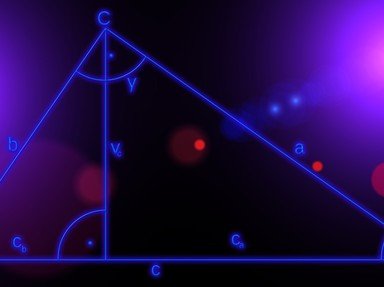Quiz Answer Key and Fun Facts
1. One of the easiest circle theorems to remember is to do with angles in a semi-circle. If two straight lines are drawn from either end of the diameter of a circle and meet at a point on the circumference, what will the angle always be?
2. When an angle is formed from two points on the circumference and two straight lines drawn from these two points meet at another point on the same circumference, it is said that the angle is ________ by an arc.
3. What is the geometric name given to a straight line which touches the circumference of a circle at one point only?
4. When a straight line touching a circle in exactly one point meets the radius or diameter of a circle, what is the size of the angle always formed?
5. Two points are marked on the circumference of a circle. A straight line is drawn from each of these points which both meet in the exact centre of the circle. Another straight line is drawn from each point and meet at a certain point on the circumference. How much bigger is the angle formed at the centre compared to the angle formed at the circumference?
6. When a four-sided shape, where each corner touches the circumference is found inside a circle, it is called a cyclic quadrilateral. What is the rule about the size of the angles that are opposite to each other within this cyclic quadrilateral?
7. A point is marked outside the confines of the circle and from that two straight lines are drawn so that they touch the opposite sides of the circles. What does this tell us about the straight lines from the point of origin to the point of meeting the circumference?
8. An important factor to take into consideration when attempting to find angles using circle theorems is the use of isosceles triangles. Which of the following statements is true of isosceles triangles?
9. One significant rule regarding the attainment of angle sizes within a circle is the 'alternate _______ theorem'.
10. We can't possibly do a math topic and not put in an equation, so here we have it! What is the equation for finding the area of a sector within a circle?
(r = radius, A = angle, x = multiply, / = divide, pi = 3.14)
Source: Author
jonnowales
This quiz was reviewed by FunTrivia editor
crisw before going online.
Any errors found in FunTrivia content are routinely corrected through our feedback system.

